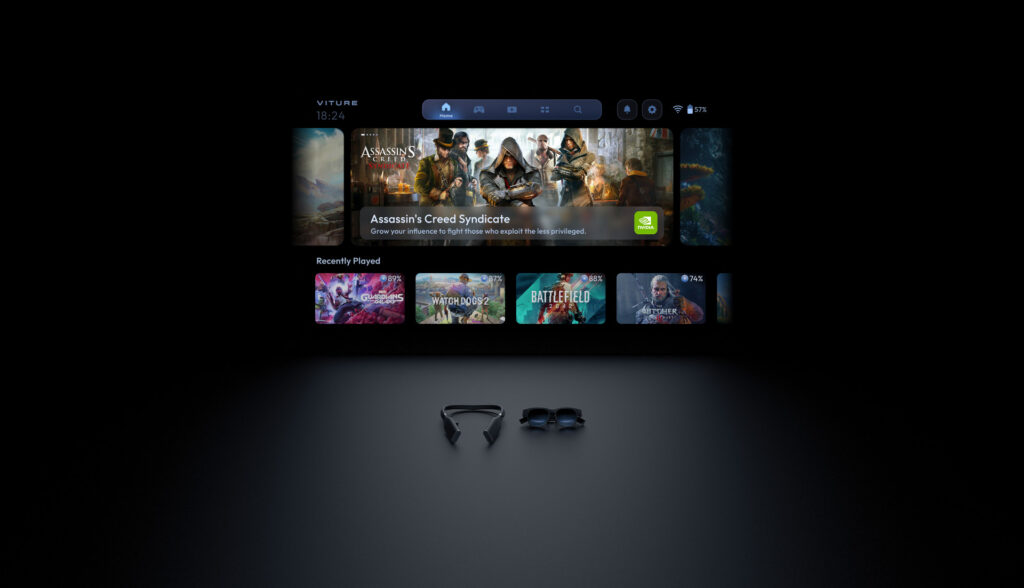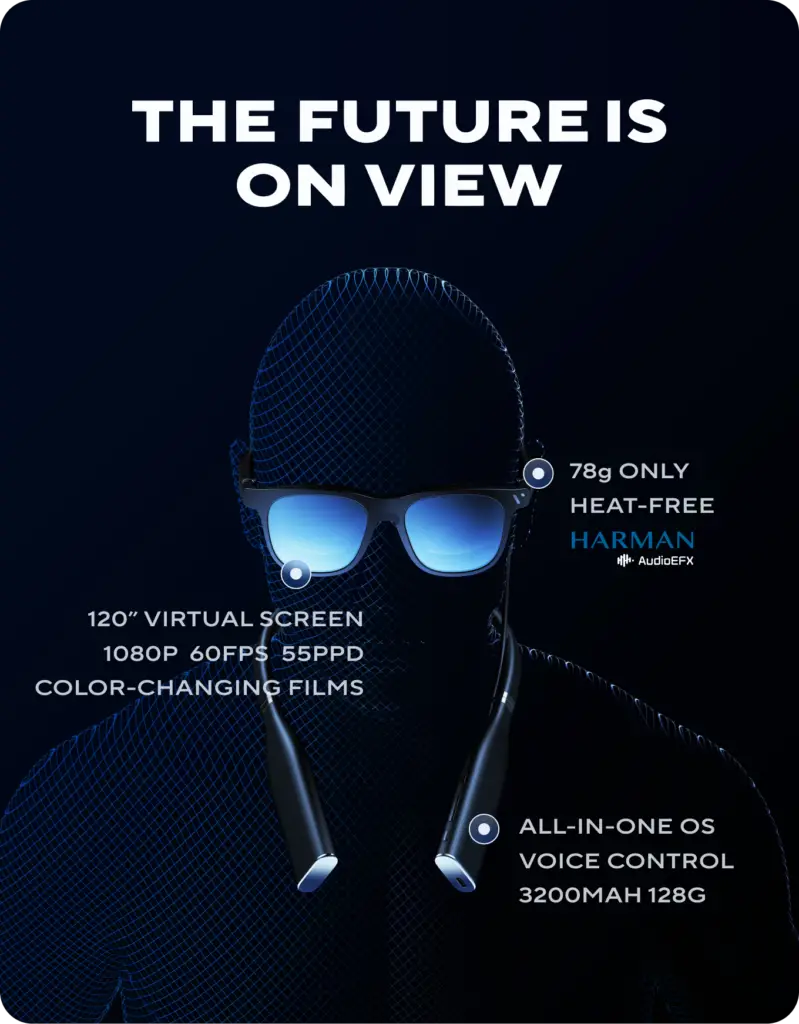The ideal form for VR has always been one of two things: a Matrix-like scenario where you essentially connect your mind to a computer to fully experience a virtual world or a headset that is simply a pair of sunglasses. If the former is possible, we’d have to achieve the latter first, but so far we haven’t been able to slim down our headsets anywhere close to a pair of glasses.
The VITURE XR glasses market themselves as the first XR glasses — note that they’re not VR — dedicated to gamers. Instead of putting you in VR, wearing these slim specs displays a digital screen on its lenses where you can stream or view any media in complete privacy. What’s most surprising is that, by and large, it works.
Personal theater

The image displayed by the VIRTUE is meant to simulate a 120-inch screen at 1080p, which I was initially skeptical about upon seeing the normal-looking shades. While I believed it would indeed project an image, I assumed it would be poor quality, especially in the colors. That’s how it first appeared when the logo faded in as I looked at my calendar on the wall behind it. Once the “screen” appeared, it was like a magic trick. It wasn’t just that I didn’t see things in the real world bleeding through, but that the screen looked real.
After a few tweaks to get the image in focus, conveniently done with two independent wheels above each eye, I could be fooled into thinking I was sitting in a theater. When the sound kicked in, before plugging in any headphones, I was also pleasantly surprised. Nothing will replace a good set of headphones, but the built-in sound of the VIRTUE is more than serviceable with plenty of range and quality.
The only design issue I really fumbled with using the XR glasses is the controls on the neckband. The “D-pad” of sorts is wildly unintuitive. I never figured out the rhyme or reason of which button would move the cursor in what direction, making any typing especially frustrating. Thankfully you do have the option of connecting Bluetooth controllers or keyboards to get around this.
Eye toy
The XR glasses are compatible with essentially any gaming device you have, from the Switch, Steamdeck, and PC, to the big home consoles in the PS5 and Xbox Series X. How you are able to play with each depends on the platform.
Personally, my primary console is a PS5, which meant I could either use it via remote play or directly connect it through the dock. Remote play will obviously vary based on your own circumstances (internet speeds, distance from the server, etc.), but directly connecting is as smooth as you’d expect. I noticed no noticeable latency or framerate issues playing while directly hooked up, and even found the experience more comfortable in some circumstances. Not only could I position myself, however, I liked, even laying down looking straight up at the ceiling, but the larger screen made text much easier to read.
That dock not only lets you upgrade your screen to a private 120-inch, 60fps display but even has a second port for multiplayer or a second viewer for media. If you wanted to just use it as a home theater, you can download any of the apps you already subscribe to, such as Netflix, Max, Prime, and more.
Convenience at a cost

For as much as the XR glasses do well, there were bound to be some drawbacks. First, the glasses aren’t exactly the most comfortable pair you could wear. You can swap out the nose pads for some extra comfort, but the temples are noticeably stiff and can irritate the ear, especially over time. Thankfully they’re not overly heavy, but you will notice the pressure.
You might not ever reach that point, however, because the battery life (which kicks in if you’re using it either stand-alone for media or on a handheld) is rather short at somewhere around 3 hours. If you do directly connect to your device with the dock, it will draw power through it, so in that scenario battery isn’t a problem.
The real barrier this device needs to find a way around is the pricing. At launch, glasses alone will run you $439, discounted from the normal retail price of $549. If you want the neckband and mobile dock as well (which are all but required), you’re looking at an over $900 investment. This unfortunately will end up excluding the market that would likely get the most use out of this device.
Keep an eye out
In truth, the VITURE One XR glasses surprised me with their quality and performance. Unlike full VR headsets, or steaming-only screens, this device does have a wider range of people who could benefit from it. Be it someone who doesn’t have the space or budget for a large screen, shares a screen with others, or travels and wants a convenient way to watch or play. The fact that it can effectively replace the need for an expensive TV, and even surpass it in ways by being so portable, is impressive.
The drawbacks are obvious: you’re going to have to pay for this level of high-quality convenience. For some, investing in a pair of these glasses is more practical than a big screen, in which case these are a perfect solution.
The VITURE XR ONE glasses, dock, and neckband were provided for the purposes of review by VITURE. They are available now on their official website.
More From Us:
The GameCube was Nintendo’s worst selling console with the best library
The Review
VITURE XR Glasses
PROS
- Great image quality
- Easy setup
- Compatible with all major platforms
- Focus dials
CONS
- Short battery
- Unintuitive default controls
- Very pricey






